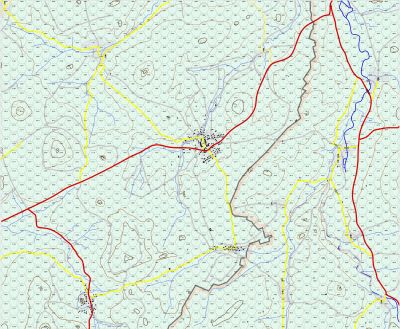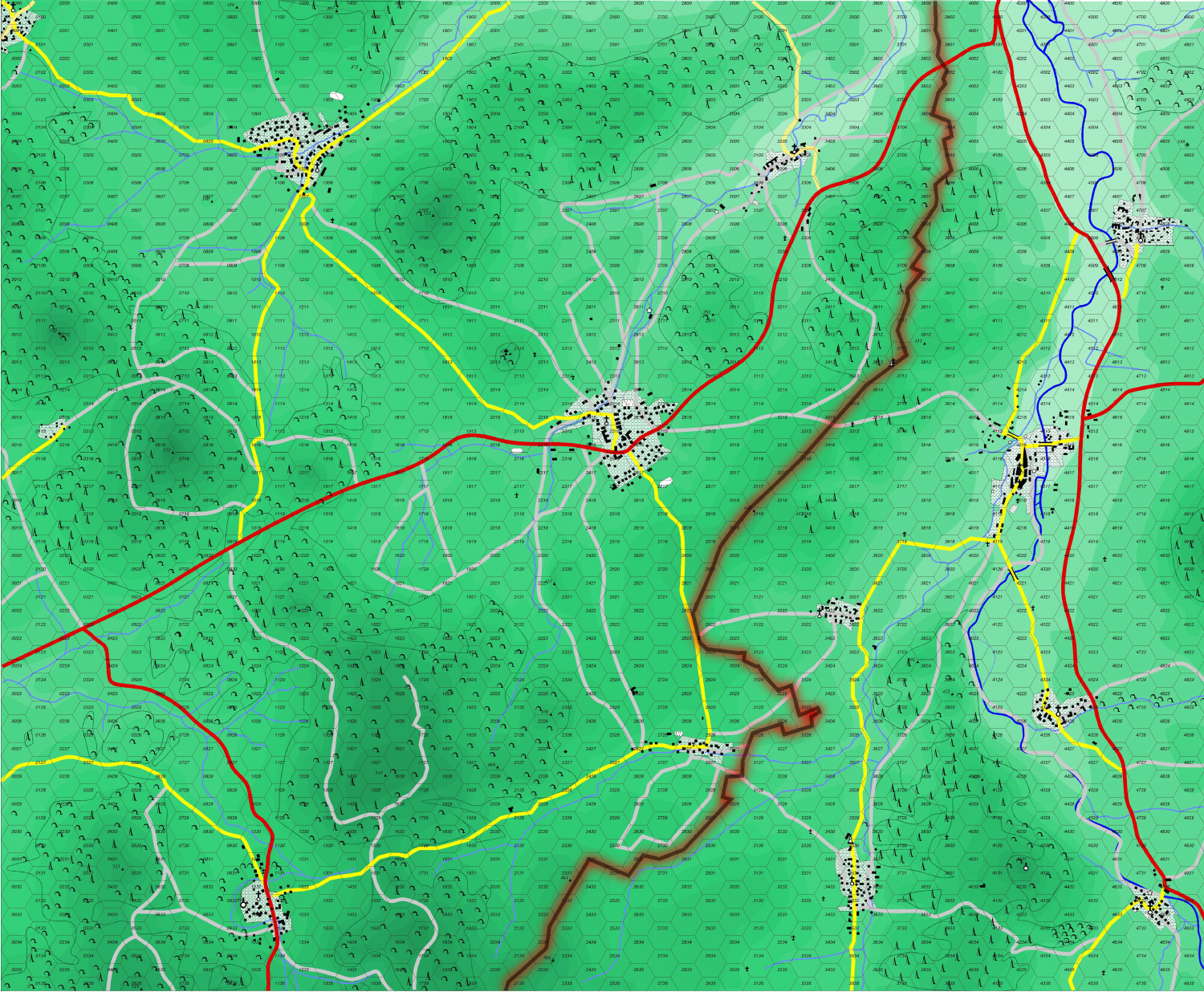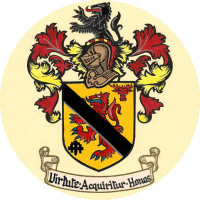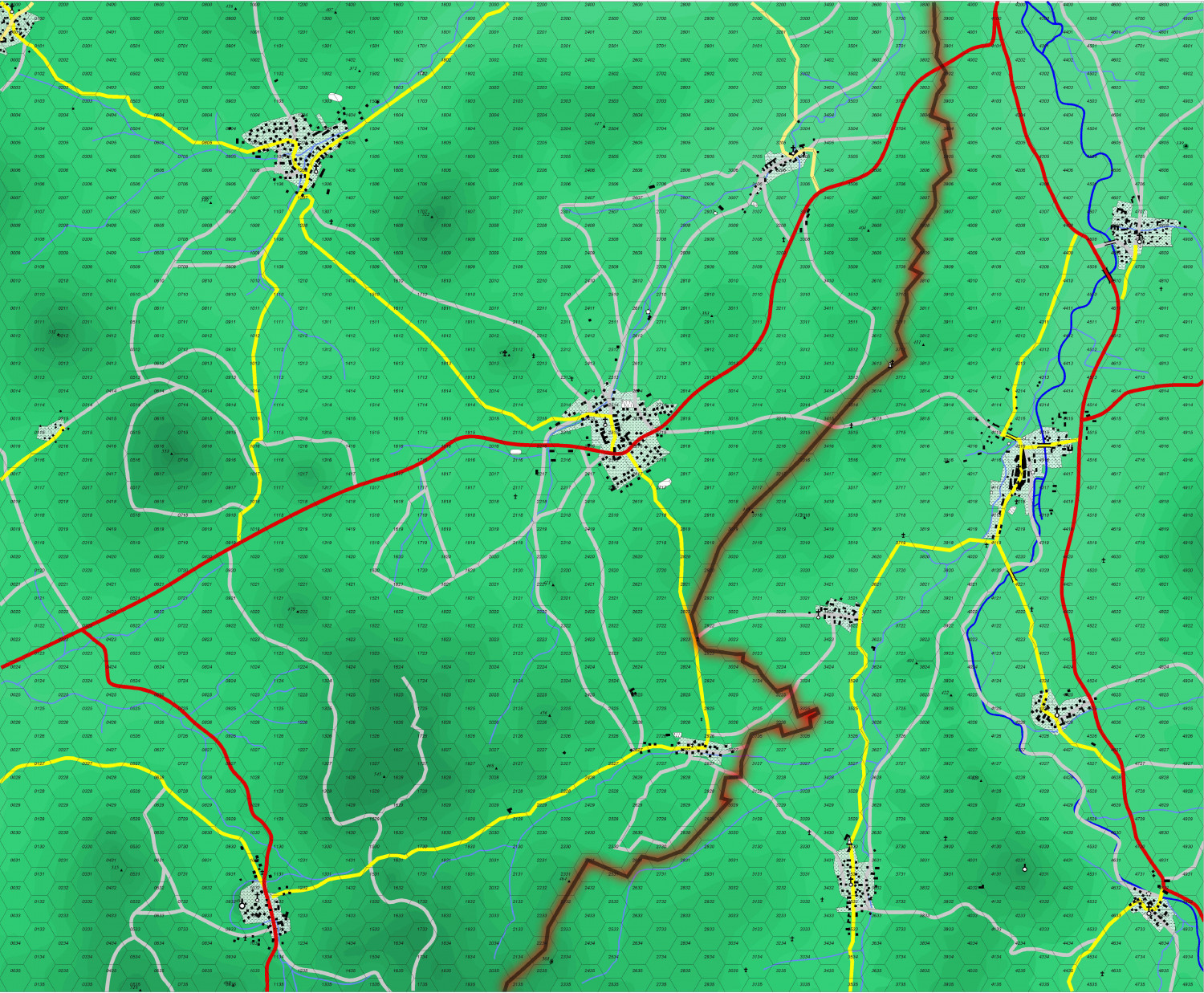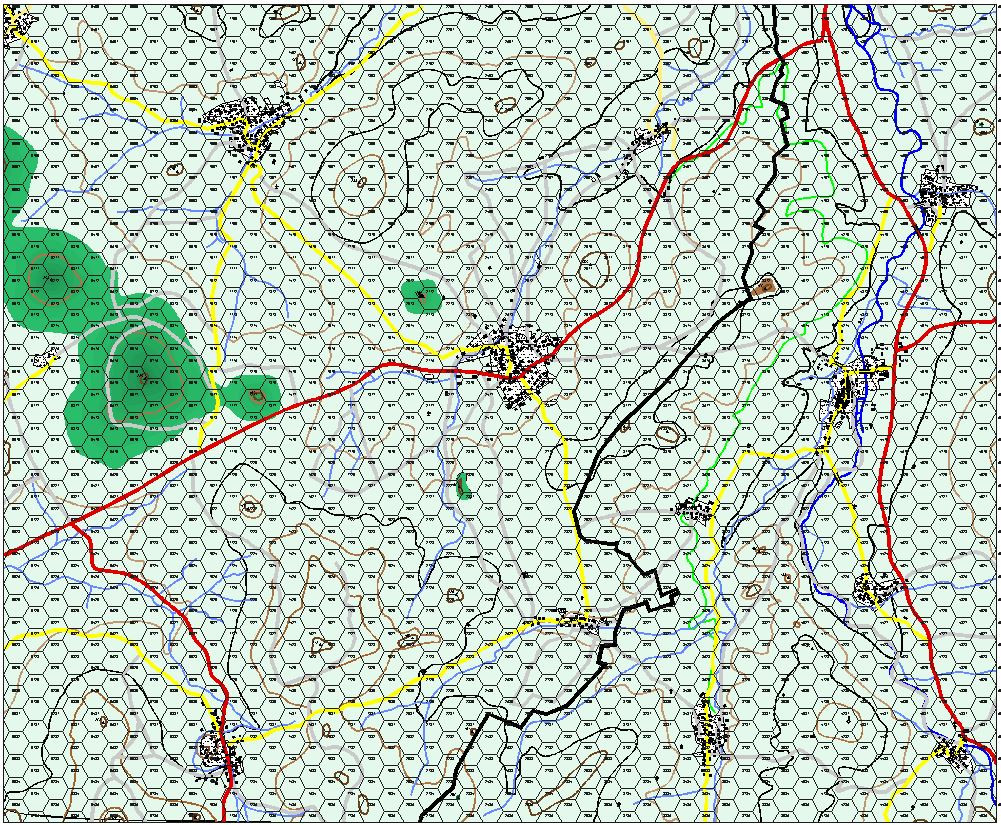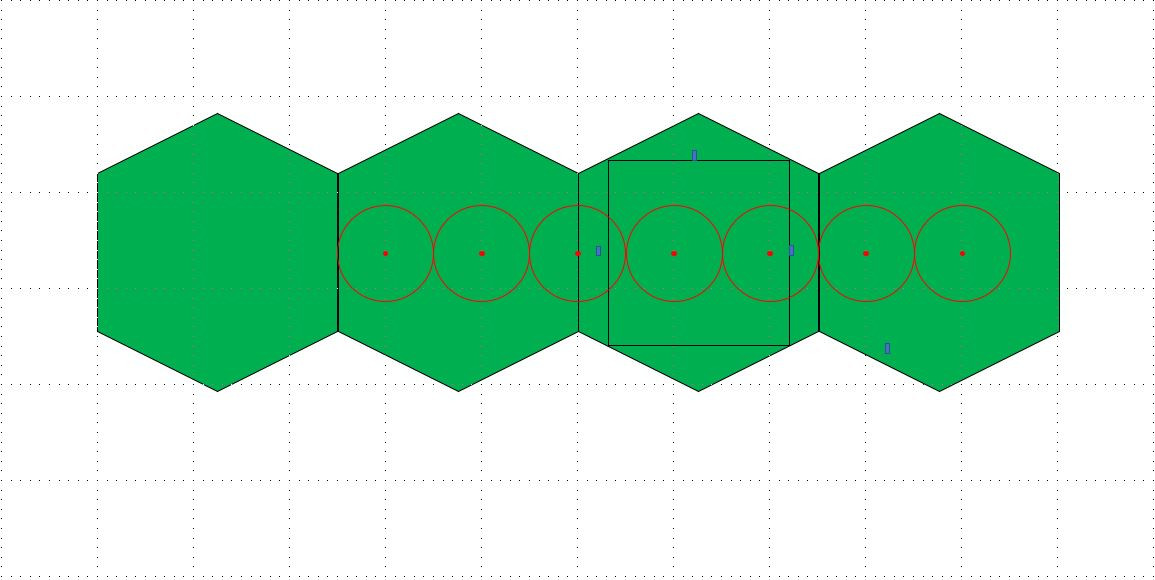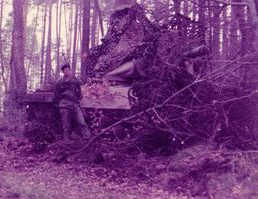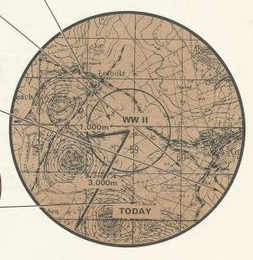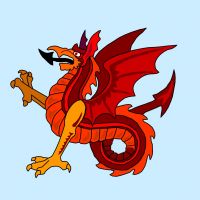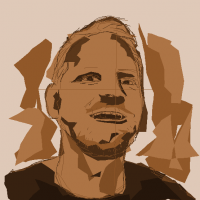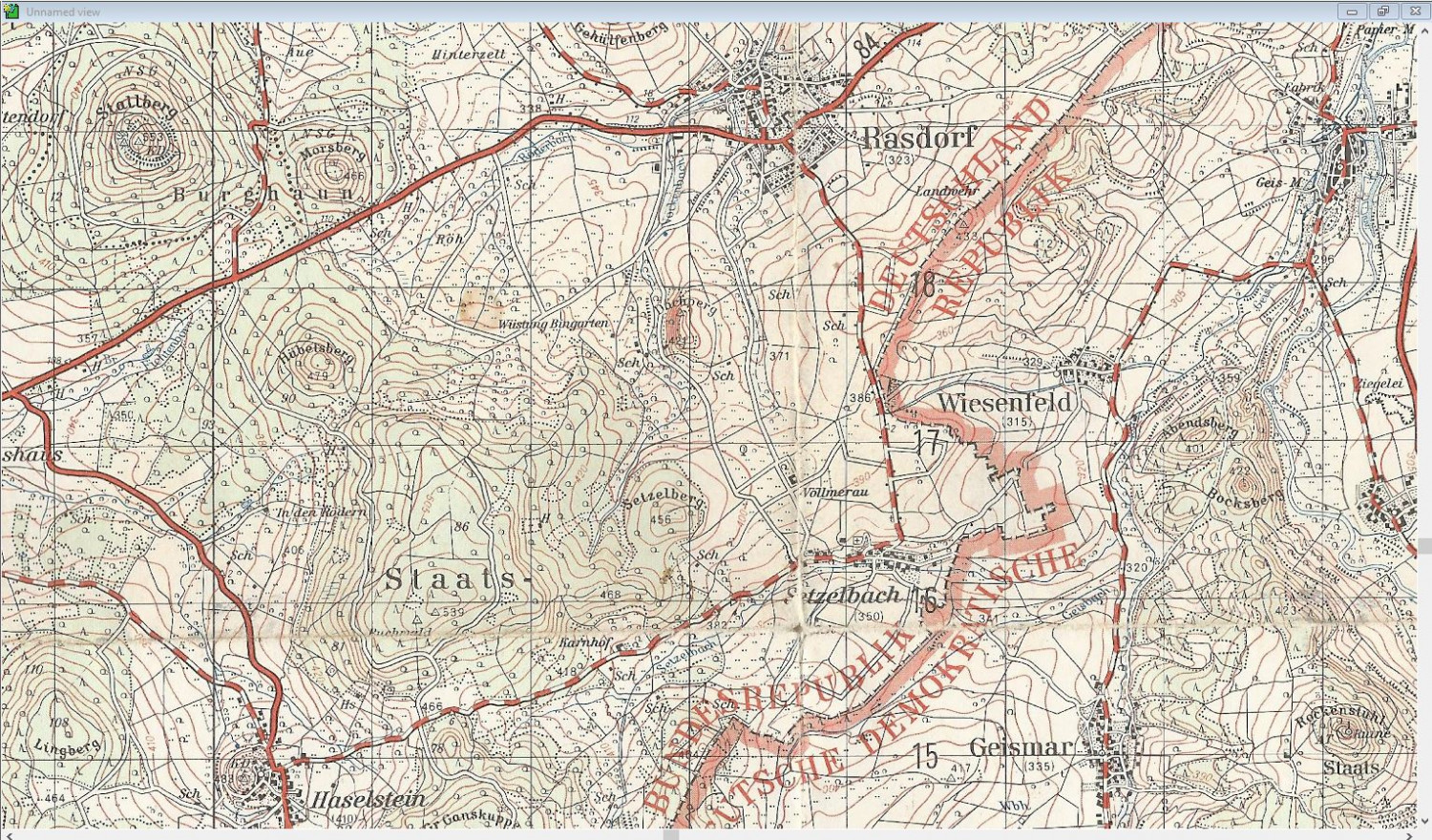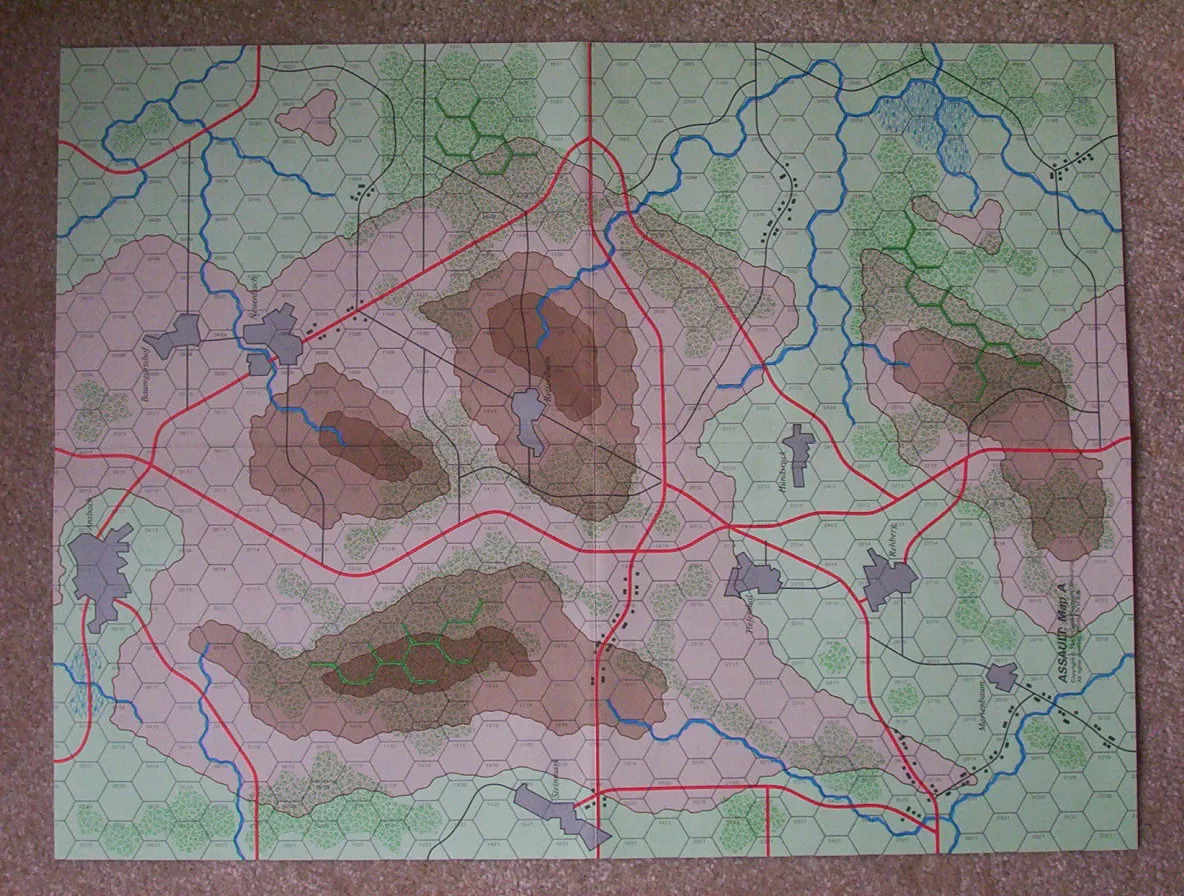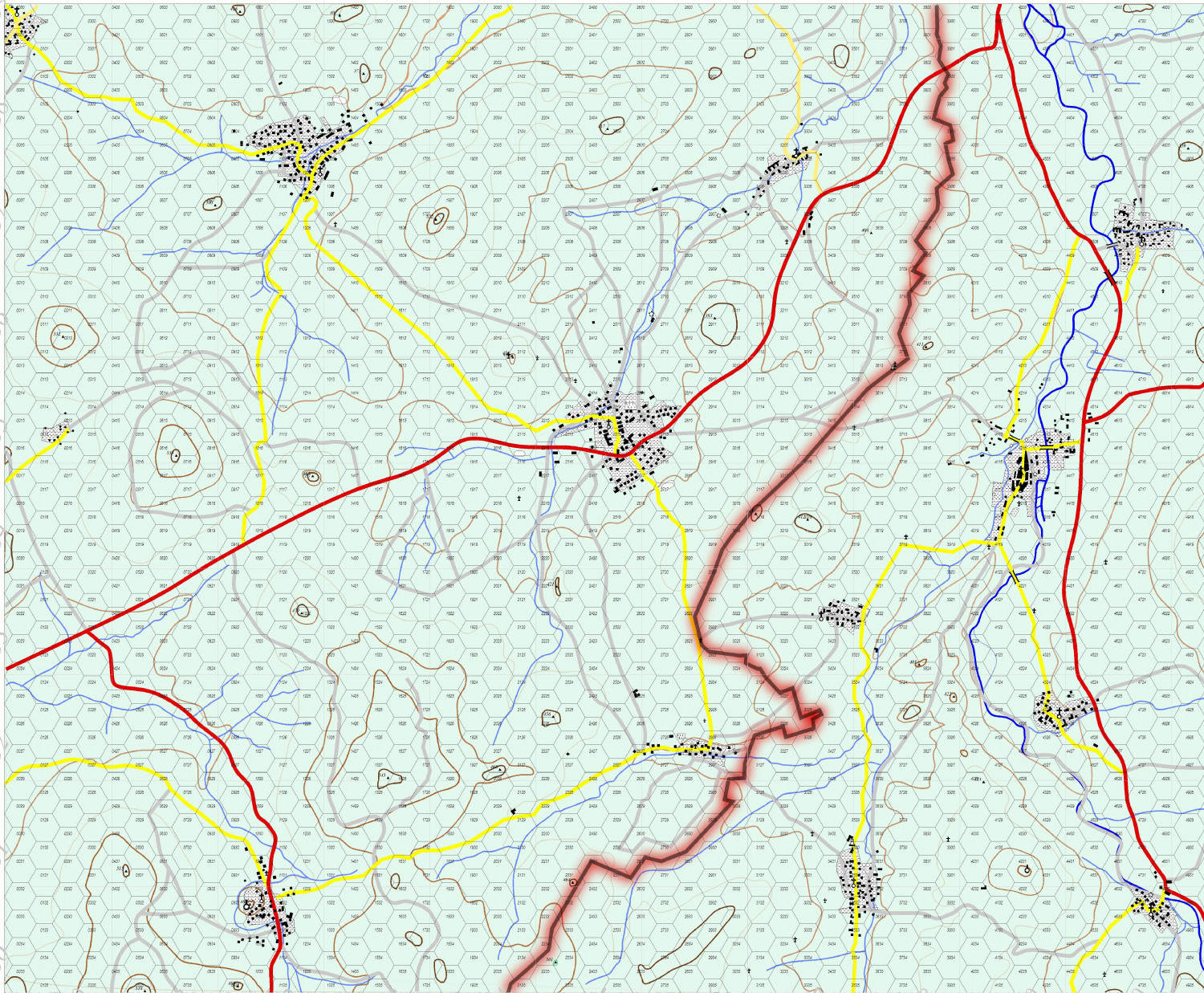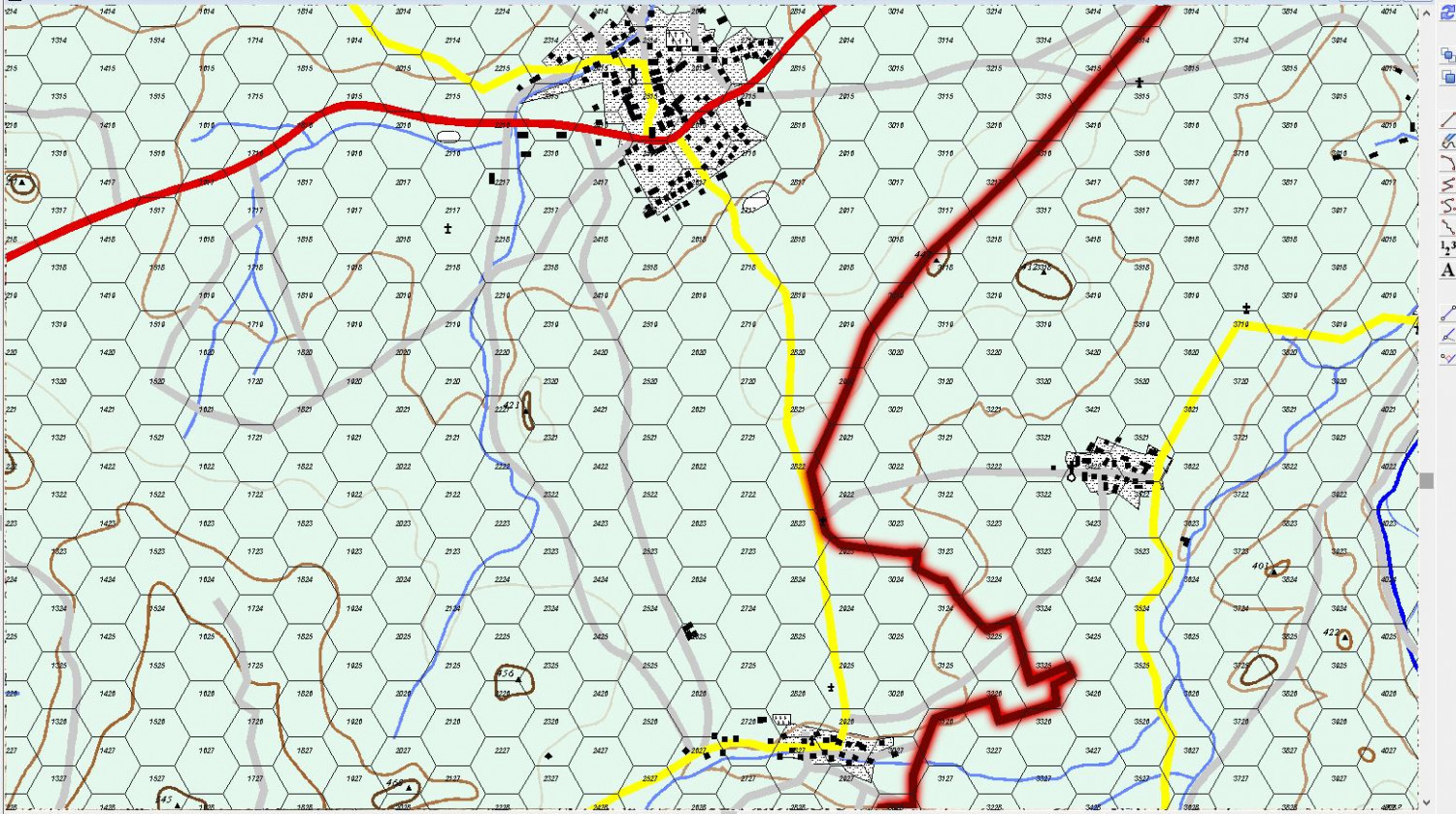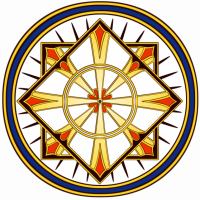
mike robel
mike robel
About
- Username
- mike robel
- Joined
- Visits
- 4,034
- Last Active
- Roles
- Member
- Points
- 435
- Rank
- Surveyor
- Badges
- 6
Reactions
-
Yet Another Wargame Map set in ...
-
Yet Another Wargame Map set in ...
Here is a look at the map after I converted contour lines from 50m to 20m interval and filled them in. When I finish, I will outline in each layer with Brown to make them more distinguishable. The difference between some colors is too hard for me to see although it is somewhat more obvious when printing. I really like the effect and many thanks to Monsen for the custom palette's he made me.
I may, though I am dreading the work and thinking required, to skip a color to emphasize the color difference between each layer.
I am uncertain how to deal with showing the extent of the forces. Usually I just use a green fill and make it transparent. I probably will do that, then fill it with the individual symbols for the type of forest (deciduous, pine, mixed) but I find filling an area with symbols is problematic and I either get way to many or only a few and it varies by shape and size, so I may end up just plopping symbols in place. You can look at the topo map to see how they look, which is the effect I want.
Also need to text.
-
Yet Another Wargame Map set in ...
Well. I decided to fill in the contour lines using the special palette Monsen made me with 48 shades of green and changed the contour interval from 50 meters to 20 meters. The 50 meter contours are still in there. Because I have trouble following contour lines, I decided to work backwards from highest to lowest. I thought I was saving regularly and saved the thing this morning a little while ago because its the 29th, not the 28th, but I obviously failed to "early and often" because the thing crashed and so I lost about an hour of work.
At any rate, here is an overall view of how things are. It will look much better.
The black lines are the 400 meter contour interval. When those are all changed, they contours will start to meander more and spread across the map. When I am done with this I will have to decisions to make. Switch to the 48 brown palette Monsen made for me and/or skip a color between contour lines (instead of 196-197-198 go to 196 - 198 - 200) to make the elevation change easier to see for my poor eyes.
Sue will be annoyed because darker is higher. :)
, but I will be able to focus better on where they go.
-
Yet Another Wargame Map set in ...
@Wyvern You are totally correct placing the features in the way I don't like leads to easier play. I adjust the feature to make it obvious where the feature lies. For roads its not a big deal, but for rivers, you pay the cost when you leave the hex and there is no cost when you move along the river line. Line of Sight issues always occur, and I just have the players resolve the issue if they can't agree with a die roll.
In my younger days, we would play computer assisted simulations in the main Fort Riley gym, on moving map tables with maps blown up to about 1:10000 scale using micro-armor. As the battle shifted, we'd move maps in our out of the play area as the game unfolded. We had to talk about what we could see and do before we filled out the battle form and took it to the computer operators. Several times, late in the game and usually late at night it seemed fist fights might break out as the arguments became heated and ones map reading skill, as well as other qualities and abilities might be called into question.
Regardless, I try to make my map and rules as clear and understandable as possible. Since battle is chancy, if players disagree I tell them the challenger gets to roll a die and if its even he wins and odd the challenged wins. If in the other players turn, they have to roll again to determine if the issue changed.
I'm a moron. I didn't scale the drawing properly. The dot's you see in the background are 0.1 inch apart, the hex is 25 dots wide and each dot is 10 meters apart. Therefore I have spaced the tanks 10 meters apart, not 100. The second picture below shows the correct spacing at 100 meters.
The other thing to remember is tanks are tiny and hexes are large. The Hexes below (in the second diagram) represent the typical width of a 1000m battle position I would allocate to a platoon to give them plenty of room to shift position in the defense or to move in the offense. The M1A1 tank is scaled to represent its length and width (9.77m x 3.66m) with the typical 100m spacing between tanks. Seldom would the tanks of my company in the same hex, unless I was in the final assault. They can be anywhere in the hex and you can bet they would look for the most advantageous position for themselves as they could find.
The 6 red dots in the second diagram represent the impact of each round while the circle represents the burst radius and together represent the beaten zone of a volley from a 155mm artillery battery. A single volley would do little, if any, damage to the tanks.
The black square represents the counter size.
Diagram 1: Incorrect. This rendering has the tanks spaced too closely together.
Diagram 2. Corrected. This rendering has the tanks spaced correctly.
You can see the battlefield is empty space and an individual tank or person can be virtually anywhere inside the hex. So measureing from the hex center is an inexact representation of what occurs. But no one wants to get into computing line of sight mathmatically (except maybe in a computer game) so it is good enough. The 100 meter spacing is somewhat elastic. The platoon could get pinched down to a wedge in which the tanks are only 10 meters apart or even into a column, but you do't want to that close together.
As Sherman said, "Men are not blocks of wood," but neither are blocks of wood (or cardboard) men or tanks.
Here is a shot of me in front of my first tank. The woods are moderately dense, but LOS in blocked pretty well if you are trying to see in, but is pretty open when looking out. Until you shoot and the muzzle flash gives you away. Then you need to move, which is why I gave all that space to me tanks. Today with thermal sights, hiding is much harder. Better to dig in and not turn on your heater in the cold.
A Boy and His Tank.
Lastly, this last shot shows the difference in range from WWII (an M4A3E8 76mm Sherman tank) versus about 1980 (An M60A1 Main Battle Tank) overlayed on a section of a 1:5000 map near where my map is. A glance easily shows several places where LOS is blocked and areas where tank would have a difficult (slow) time trying to move through.
WWII Range vs 1980s Range
More than anyone here probably wants to know. :)
-
Yet Another Wargame Map set in ...
You guessed it in the V Corps area of Germany in the Fulda Gap. This one, while in the same area, is a little different and is centered on Rasdorf which is very near the old Internal German Border. Here is a map of the region, covering an area about 5 x 8 km. the scale is 1:50000 and each square is 1km
I'm making the game for a game called Assault which was set in the late 80's and I used to play it for both enjoyment and for training my officers. You can read about at https://www.boardgamegeek.com/boardgame/8284/assault-tactical-combat-europe-1985 if you are tired of making maps for the moment.
Here is one of the maps from the game. They are based on German terrain, but are isomorphic and very generic and I don't like the roads running in the center of the hex, streams on the hex edge, and other features contained within a hex or a group of hexes. counter interval here is 20 meters, but you can say it is anything you want. The map scale is 1 Hex = 250meters and the unit scale is platoon (3-10 vehicles).
This is a copy of my game map in progress. I had to blow it up to the Assault Scale, so it is much larger than the top map. The map measures 30 x 37 inches or so. (sorry about mixing measurement systems.) Rasdorf is the city in the middle and Setzelbach is directly below it and very near the Red/Black line which marks the Interzonal or Inner German Border.
This map is sized to about the same hex size as the Assault map above. The town at top is Rasdorf and the smaller one at the bottom is Setzelbach. My tank and cavalry platoon would occupy an Observation post for three weeks about once every quarter to provide surveillance of the border, the OP is now a museum and sits just about where the light gray road exits the map to the north near the Border.
It's getting close to finish. I have to decide if I want to put in more contour lines, fill in the contoursso they are easy to interpret, and detail the areas of forest.
Enjoy


